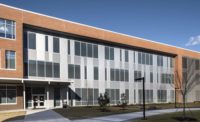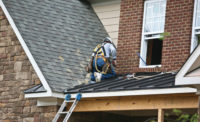New Tools Make Sustainability Affordable and Achievable

For more information, visit www.PlanITImpact.com.
It is no surprise that peak sustainability is a top concern of the construction industry. Yet it is rarely accomplished due to the real or perceived higher costs and a lack of resources available in the early stages of design and planning that illustrate clearly what the potential benefits are.
Architects, designers, planners and builders aspire to creating sustainable buildings at every opportunity, as they can save measurable amounts of costs on utilities, promote efficient and eco-friendly materials. The process also introduces improved ideas for the intelligent management of natural resources, such as capturing storm water run-off, positioning buildings for optimal sunlight and wind, or even using less conventional strategies such as geothermal heat and cooling.
Thus, the proof is clear that higher quality construction provides dividends to building owners. So why is it still such a challenge?
Boosted sustainability comes down to measuring building performance as early in the planning and design process as possible. It is especially difficult for mid-sized construction firms to pre-measure building performance for sustainability as constrained budgets are more common among small and medium firms, either to register their projects with LEED or to undergo custom consulting.
However, a turning point for building performance is now in sight as different technologies and ideas are coming together to solve the problem and make sustainability affordable, efficient and simple. For example, using information gleaned from open data, more strategic use of the cloud and ultra-fast gigabit networking, and, when all the data is in place, leveraging a holistic scoring system to turn data into clear information. This application of technology makes sustainability more affordable, achievable, and best of all, simple to carry out for small to medium firms.
Affordability: How can the many components of sustainable design, including energy efficiency from solar PV, better insulation, or water savings measures be measured in a cost-effective method, before construction begins? The need is for a single way to bring relevant data into a single view, where multiple measurements and variables can be input and considered holistically instead of tackling just one aspect at a time.
Efficiency: How can key data be obtained quickly instead of being laboriously hunted for by accessing separate and inconsistent silos? Commercial construction codes only provide a small portion of the data needed. There is a clear need for more easily found data to plug into the model, and a smoother method to integrate multiple data points affecting a sustainable building into a single view.
Simplicity: How do contractors relate the impacts of the materials and choices available to their clients in a way that they will easily comprehend? A scoring system that rates different elements as efficient or non-efficient helps solve the problem.
Open Data
More easily accessible information and a straight-forward scoring system can turn the complexity and cost problem for sustainability around. This is part of the Open Data Movement. Along with integration of 3D modeling and integrating meaningful metrics into a pre-construction score.
Open data is any data that can be freely published, used, reused and redistributed by anyone for anyone. Open Data information means getting data, sometimes even in real time, that empowers developers while saving time and costs. Open Data is now helping to drive key real time information from federal and local government entities and private companies. For example, hundreds of regional utilities are now providing gas and water rates and the NOAA is providing local rainfall/weather data. WalkScore is now publishing statistics regarding the precise proximity of desired resources, such as parks, stores, libraries and businesses, which is very important to millennials.
Converge these streams of data into a single model, next apply an easily understood score with rational for improvements, and construction designers can turn a weakness into a great advantage.
The result is that a holistic data model is conceived with anticipated energy savings that steer optimal and budget friendly outputs.
Key Examples
- Storm water Infiltration: Quantifies the overall perviousness of a site and amount of rainfall, based on weather data from the NOAA, and includes site area, composition/area of site surfaces and exemplifies the application of the system to see potential impact on city utility infrastructure
- Energy Savings: Returns the savings in dollars per year from energy improvements to the project based on planned use, compared to Code Minimums, based on your utilities’ local rates.
- Water Usage: Returns a water savings score based on planned and standard water usage calculations as well as expected Simple Payback of those efficiency improvements.
- Transportation Access: Represents an average score of U.S. Census data, Transportation and Walkscore.com data, as walkability and connectivity via transportation options is a growing priority for communities.
Conclusion
In 2017, the revolution of Open Data is in its early stages, and is poised to play an expanding role in resilient and sustainable building designs. This helps our industry make good on the vision for tomorrow’s smart communities.
Looking for a reprint of this article?
From high-res PDFs to custom plaques, order your copy today!







